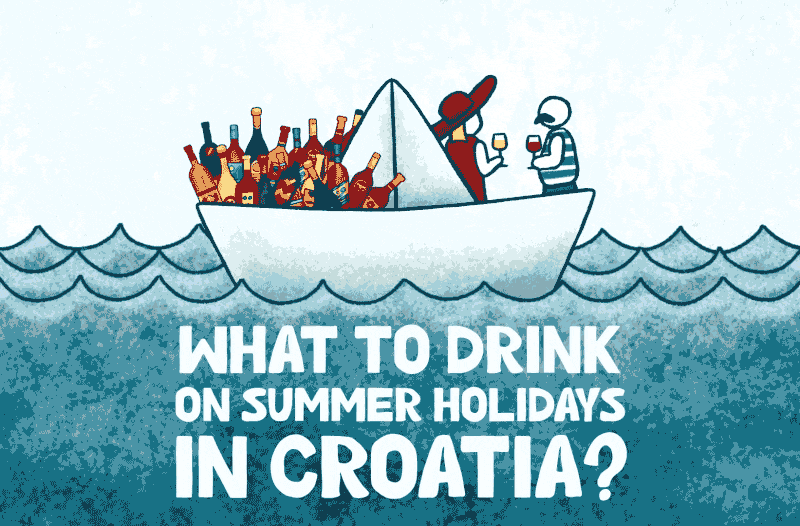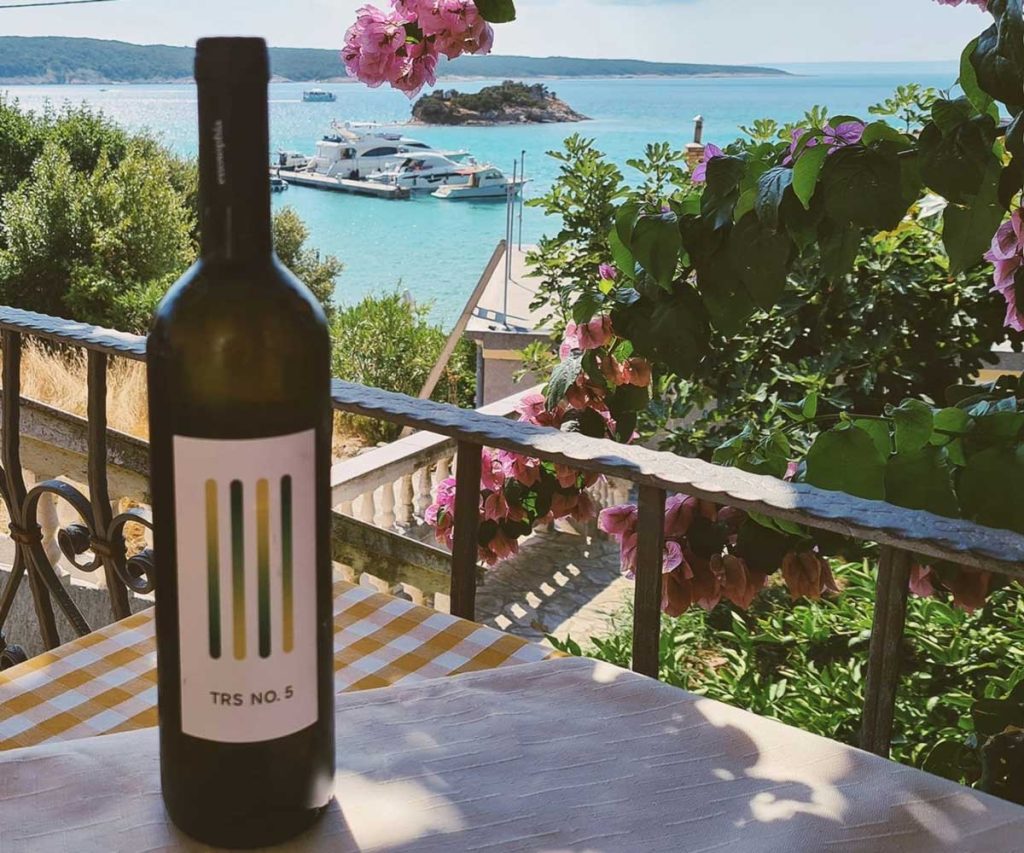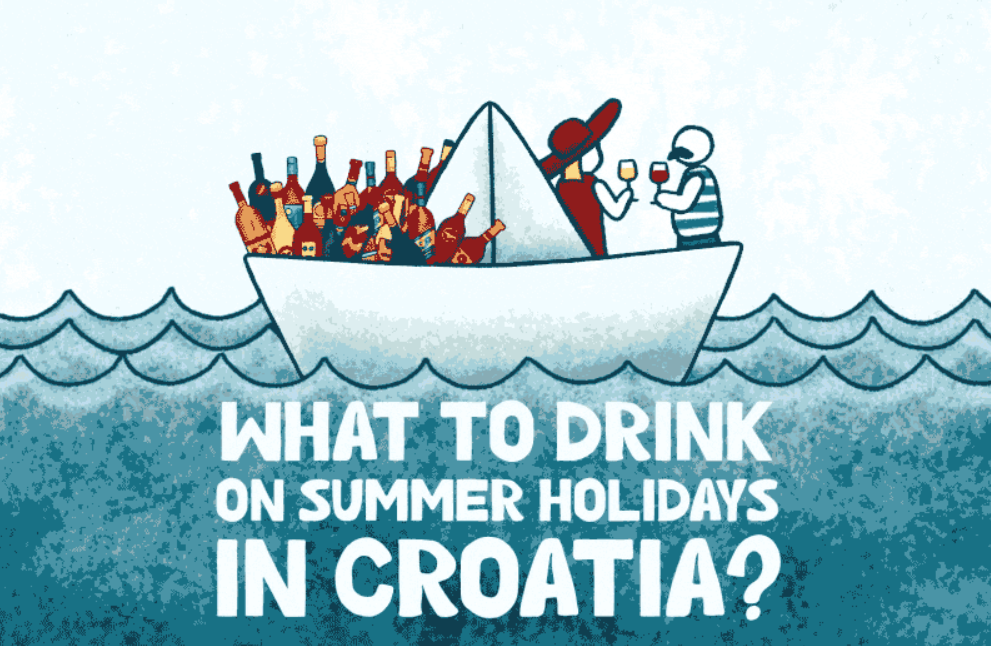March 04, 2024. – Embarking on a journey through the sun-kissed landscapes and charming towns of Croatia during the summer months offers more than just picturesque views and cultural experiences. It unveils a tapestry of delightful local beverages that epitomize the essence of the season. As Wine & more points out, Croatian summer drinks beckon both locals and visitors alike from the shores of the Adriatic to the charming cafes tucked away in historic corners, inviting them to embark on a sensory adventure unlike any other.

The Culture of Drinking in Croatia
Picture yourself lounging in a seaside café, the gentle breeze carrying whispers of the sea as you reach for a chilled glass. The options are aplenty, each offering a unique taste of Croatian summer.
Perhaps you opt for a spritz infused with the aromatic Maraschino liqueur, or maybe a gemišt, a refreshing blend of white wine and sparkling water that has stood the test of time.
Whatever your choice, the goal remains the same: to quench your thirst while embracing the laid-back charm of Croatian summer living.
At the heart of social gatherings, you’ll often find rakija, an aromatic brandy crafted from locally sourced fruits such as plums or grapes.
Cultural Significance
To drink in Croatia is to partake in a shared experience, a celebration of life, friendship, and community. Whether it’s a casual gathering with loved ones or a festive occasion marked by the sweet notes of Prošek, a traditional dessert wine, every sip is imbued with meaning and connection. Tables also often feature:
- Rakija: A fruit brandy we commonly indulge in as an aperitif.
- Beers: From local breweries with distinct Croatian character.
- Wines: Many of which follow traditional practices passed through generations.
In Croatia, the act of raising a glass transcends mere indulgence; it is a testament to the bonds that unite us and the traditions that endure.
The Pleasures of Summer Drinking in Croatia
From crisp wines to artisanal beers and time-honored spirits, each sip offers a glimpse into the soul of Croatia, inviting you to savor the season in all its splendor.
Croatian Wines
In Croatia, the wine heritage is celebrated for its diversity, yet there are shared customs for enjoying the summer season.
Summer wine in Croatia is more than a tradition; it’s a cherished part of local culinary experiences. Pairing local food with wine is a time-honored combination, particularly in a country with a rich winemaking tradition like Croatia.
For red wine enthusiasts, Plavac Mali is a must-try variety, known for its robustness and deep roots in coastal regions. White wine aficionados can indulge in Graševina, Malvazija, or Pošip, each offering a refreshing zest:
- Plavac Mali: Full-bodied red, often with a tannic character
- Graševina: The most significant Croatian white wine variety
- Malvazija: Aromatic white, primarily found in Istria
- Pošip: Flavorful white originating from Korčula island in Dalmatia
Croatia offers many light-bodied refreshing summer whites made out of indigenous varieties, such as:
- Žlahtina,
- Kraljevina,
- Debit,
- Kujundžuša.
These varieties are known to be ideal for making light-bodied, low-alcohol white wines. However, plenty of different Graševina, Malvazija, and Pošip wines are made as refreshing whites. That includes varieties traditionally known for more powerful and aromatic whites, such as:
- Grk,
- Maraština,
- Vugava.
Graševina

Known as the queen of Croatian continental wines, Graševina is valued for its versatility and refreshing qualities. Predominant in regions like Slavonia and the Danube, Graševina complements light summer dishes and embodies the essence of Croatian wine culture.
One of the best examples of this variety is Trs No5 Graševina which undergoes a carefully managed production process.
Sedimentation precedes a 12-day fermentation period at a controlled 16°C, encompassing both alcohol and malolactic fermentation.
Following this, the wine matures gracefully for four months on fine yeast sediment, receiving intermittent stirring for refinement.
The result is a wine of enduring elegance and purity. Its aroma profile boasts fruity notes interwoven with the gentle fragrance of white acacia flowers, offering a delightful sensory experience that celebrates the essence of freshness and vitality.
A gentle freshness permeates the wine, infusing it with vibrancy and a sense of lightness.
If the same meticulous approach is applied to the best Graševina grapes, this can result in an even more structured white wine. The Beef’s Head (Goveđa Glava Graševina) is the perfect example.
Grapes are hand-harvested from a 33-year-old vineyard, reaching full phenological maturity without a hint of late-harvest elements.
They undergo a delicate process, beginning with a six-day maceration at a gentle 20°C (68°F), followed by pressing and complete fermentation in 1000L wooden barrels crafted from Slavonic oak, accompanied by malolactic fermentation.
Post-fermentation, the wine rests on its lees without sulfur additions, receiving tender stirring. 30% of the wine transitions to barrique barrels, where it matures gracefully for six months before bottling.
Nearly two years in the bottle allow the wine to evolve and mature further before its debut on the market.
The resulting wine is a testament to elegance, boasting a rounded, lively character accentuated by distinct notes of stone and candied fruit.
This Graševina is curated for moments of indulgence, pairing seamlessly with smoked fish, aged cheeses, and a medley of nuts.
Croatian Sparkling Wines
Croatia’s sparkling wines are gaining international recognition, offering a diverse array of options for celebratory moments or as refreshing companions during summer. Graševina is often used to produce sparkling wines.
For example, Graševina can be excellent as a Charmat method (Prosecco method) sparkling wine, or as a traditional method (Champenoise) sparkling wine.
Earlier Harvested Graševina have higher acidity and lower sugar. It is ideal for making base wine. After pressing, fermentation is started lasting for a maximum of 14 days at 16 °C.
After fermentation wine is preserved in fine yeast sediment with stirring once to twice a week till the end of November.
After that period, secondary fermentation starts in special (Autoclave) tanks for production by the Charmat method. Secondary fermentation also lasts for a maximum of 14 days at 16 °C.
Today Blanc is the epitome of freshness! A palate cleanser that lasts longer than expected, bringing forward apple and lime fruitiness. Very clean and with just the right kind of tension that keeps you relaxed in the shade by the pool.
Local Beer Scene
Croatia boasts a vibrant beer scene, with classics like Osječko and Karlovačko leading the way. Alongside traditional lagers, craft breweries are emerging, contributing to a dynamic beer culture that complements summer adventures.
Croatian Spirits and Liqueurs
Rakija, a traditional Croatian spirit, is derived from fruits like plums, grapes, and herbs, capturing the essence of Croatian hospitality. Other popular liqueurs include Travarica, a herbal rakija, and Pelinkovac, a bitter liqueur infused with wormwood.
Summer Cocktails and Mixed Drink
During the summer, Croatians enjoy a variety of cocktails and mixed drinks featuring local spirits. Quality Croatian-made gins and vodkas are becoming increasingly popular, adding a local twist to global cocktail trends.
Popular Non-Alcoholic Drinks
In Croatia, coffee culture is cherished, with a variety of beloved soft drinks reflecting local tastes and traditions. From leisurely coffee sessions to spirited social gatherings, beverages play a central role in Croatian social life, blending tradition with contemporary influences.
Tips for drinking like a local in Croatia
When touring along the beautiful Dalmatian Coast, we’re enveloped by crystal clear waters and an array of excellent local foods that pair wonderfully with Croatia’s refreshing beverages.
Beachside Sips: Opt for “Bevanda“: Croatians blend wine (in this case red wine) with still water, a perfect beachside refresher. Savoring a bevanda means keeping pace with the laid-back coastal vibe. The good news is it’s becoming more popular again, after a long time it was considered obsolete.
Embrace “Gemišt” everywhere any way you like it: Croatians often choose gemišt on a hot summer day, a mix of white wine and sparkling water. It’s light, effervescent, and even complements seafood dishes.
Join the ongoing and neverending debate about which varietal wine is best suited for this ever-popular mix. Best to start with a half wine to half sparkling water ratio.
Authentic Flavors:
- Indulge in “Rakija” with locals, Croatia’s beloved spirit. Sipping this strong drink is a rite of passage, and it usually comes before or after our meal.
- Taste “Maraschino”—a sweet cherry liqueur originated from Zadar, Dalmatia. Its unique flavor pairs well with desserts.
Conclusion
From everyday rituals to special celebrations, Croatian beverages offer a taste of local culture and hospitality. Whether sipping wine by the Adriatic Sea or enjoying rakija with friends, each drink tells a story of tradition and innovation woven into the fabric of Croatian life.
NOTE: The article was originally written at wineandmore.com











